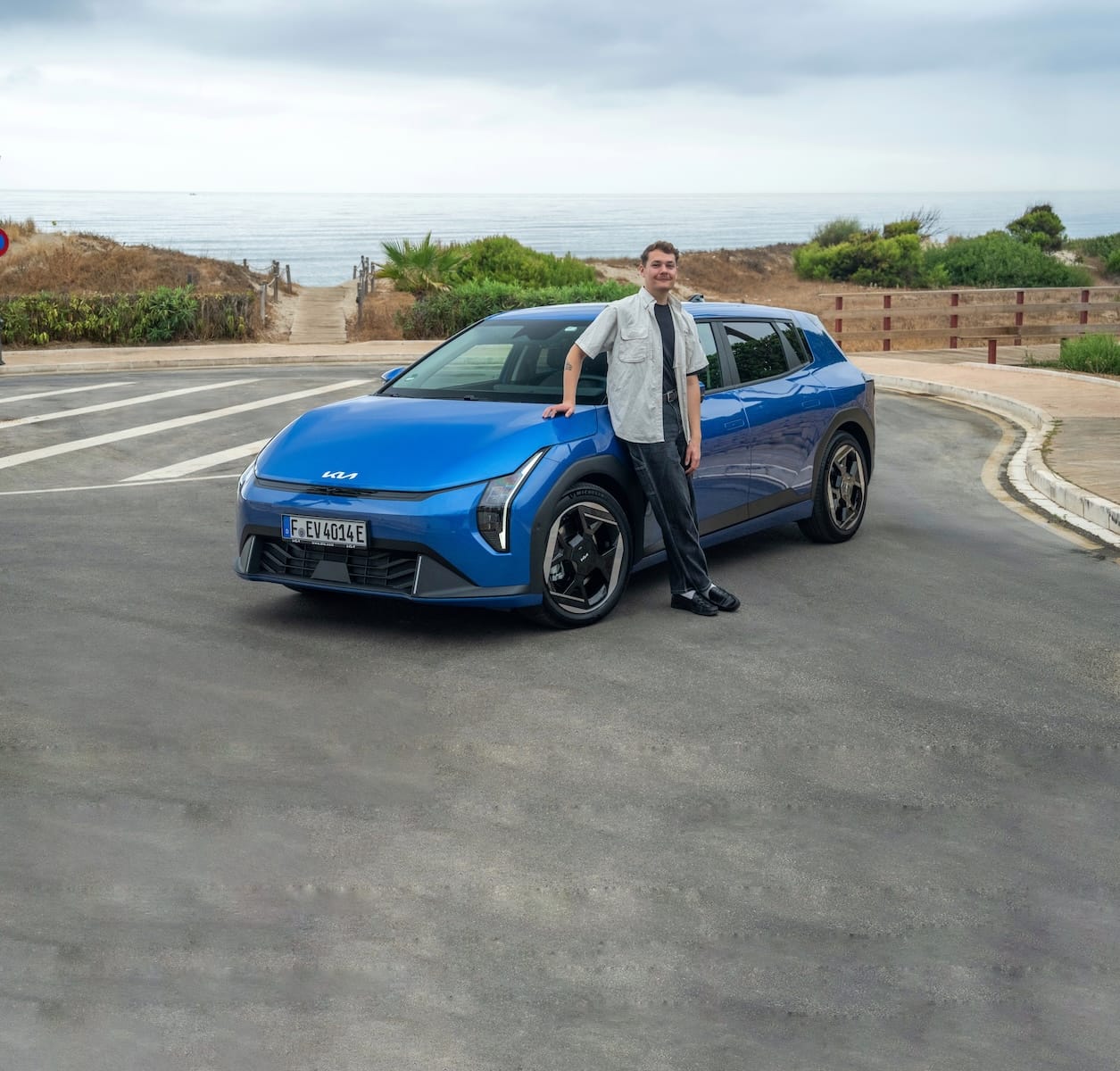
Kia EV4 review: Comfort and character to take on the ID.3
Although Kia entered the electric age back in 2014 with the boxy E-Soul compact car, in recent years, the South Korean manufacturer has focused primarily on SUVs and the upper segments when it comes to electrifying its model range. It was only last year that the carmaker ventured back into more affordable territory with its electric vehicles, launching the compact SUV EV3, which immediately became one of the manufacturer’s most popular electric models.
Based on the same technology, Kia is now following up with the EV4, its first classic compact car with electric drive. The model will be available in two body styles – specifically for the European market, the manufacturer is offering a hatchback version, which will be the first E-Kia to be manufactured in Europe, more precisely at the Kia plant in Zilina, Slovakia. This version is likely to account for the lion’s share of sales in this country.
The EV4 Fastback saloon version, on the other hand, will be imported from South Korea and is likely to find significantly more buyers in other regions – while classic compact sedan such as the Toyota Corolla, for example, remain very popular with buyers in the USA, they are mostly considered stuffy and impractical in this country.
Kia shows itself to be emphatically self-confident in its design
The adjective ‘old-fashioned’ definitely does not apply to the EV4. Kia’s design department’s willingness to experiment has clearly reached a new peak with this compact car. The steeply sloping front with its upright headlights in particular looks unusual at first glance.
The slightly humped rear of the fastback is also definitely not to everyone’s taste. But one thing must be said for the South Korean company: their designs bring a breath of fresh air to the automotive world, which is sometimes very homogeneous in terms of appearance. In my opinion, the proportions of the EV4 look much better in real life than in pictures.
The rear offers mid-range space
Even the EV4, which is tailored to Europe, is 4.43 metres long, a full 17 centimetres longer than a VW ID.3. The fastback version stretches to 4.73 metres, putting it almost in the mid-range class. At 2.82 metres, the wheelbase is also more than generous for a hatchback. Hardly any other compact car surpasses the EV4 in this detail. The aim is to maximise overall comfort and legroom in the rear. According to the manufacturer, it is supposed to be the most spacious model in the entire competitive environment.
And indeed, the electric compact car impresses with its airy feel, especially in the second row. Even when the front seat is pushed all the way back, even tall people still have plenty of room in front of their knees. At 1.85 metres tall, I also had enough headroom. The only criticism is that you sit quite high for a classic compact car and your feet don’t fit under the front seat.
The boot of the classic five-door model has a capacity of 435 litres in its normal configuration. When the rear seats are folded down, this increases to 1,415 litres. This puts the EV4 at the forefront of the compact class. On paper, the fastback has the larger luggage compartment with 490 litres, but whether it is really more practical remains to be seen – it has a significantly smaller boot opening, which makes loading more difficult. You won’t find a frunk in either model, because the front-wheel drive car has the engine under the front bonnet.
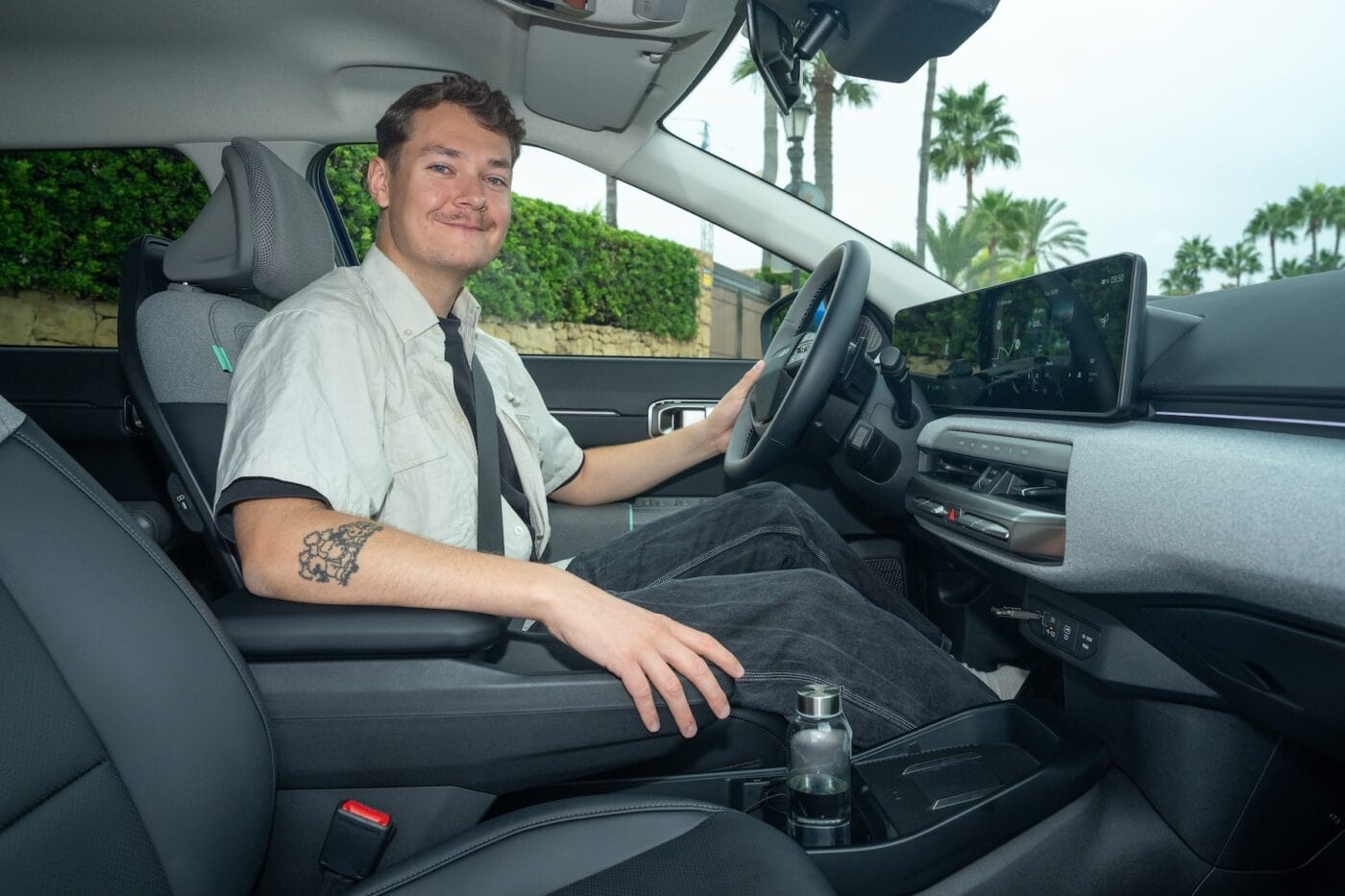
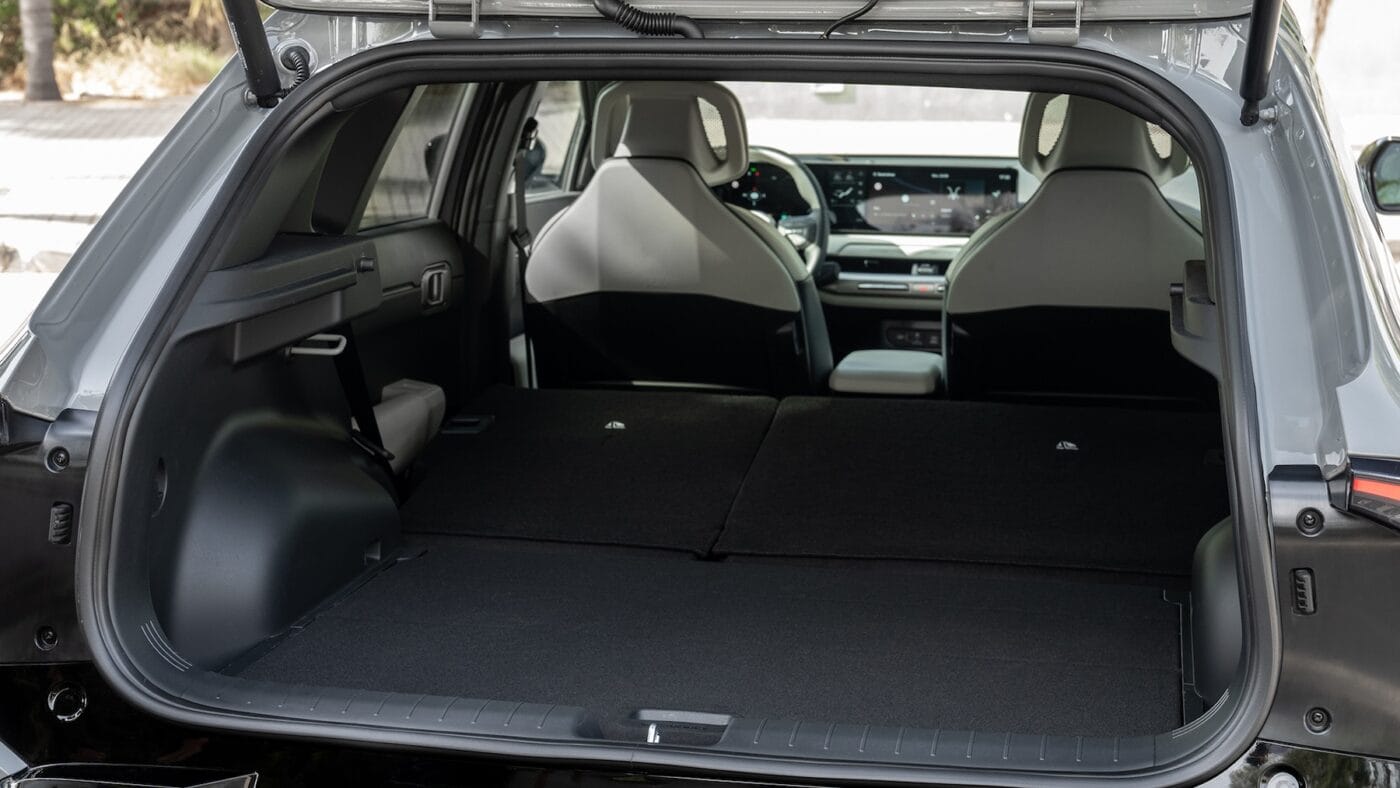
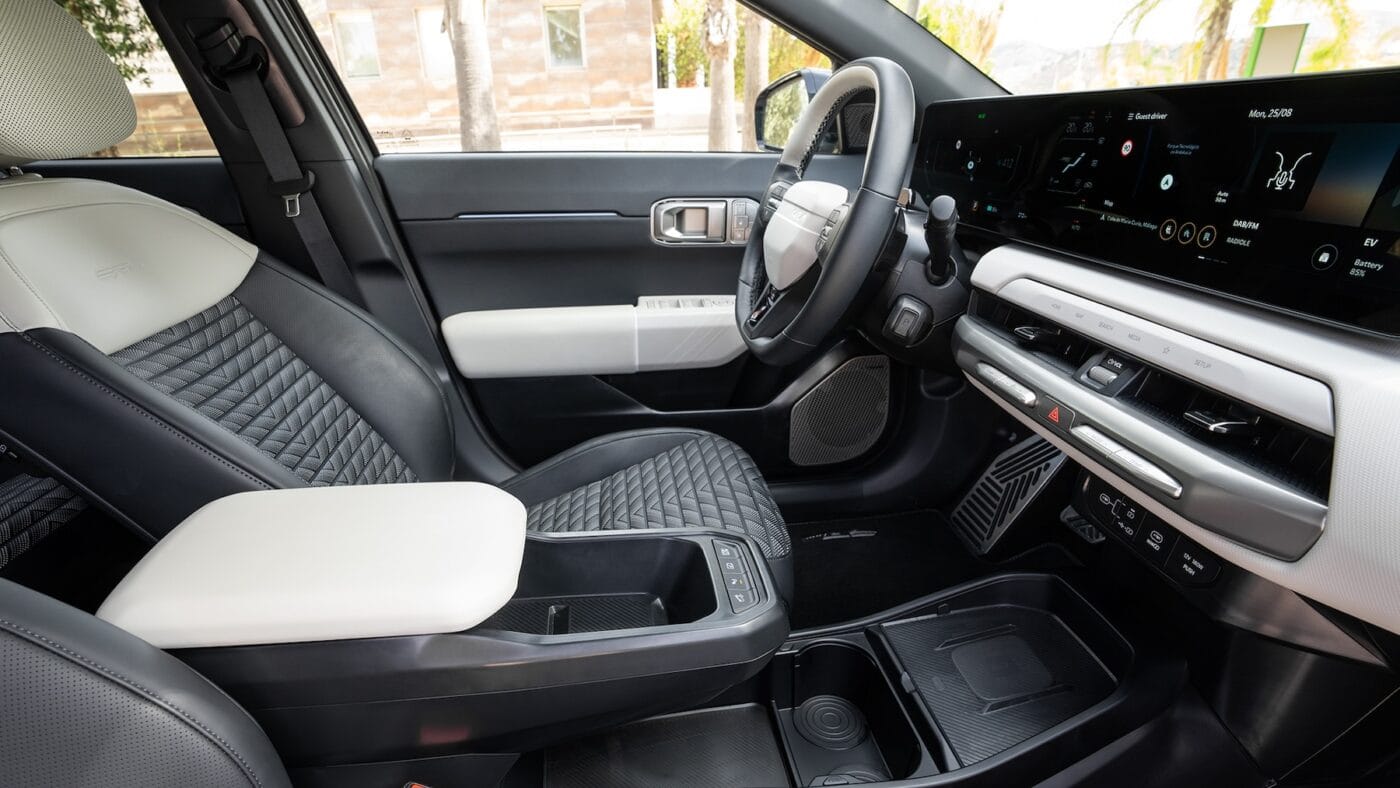
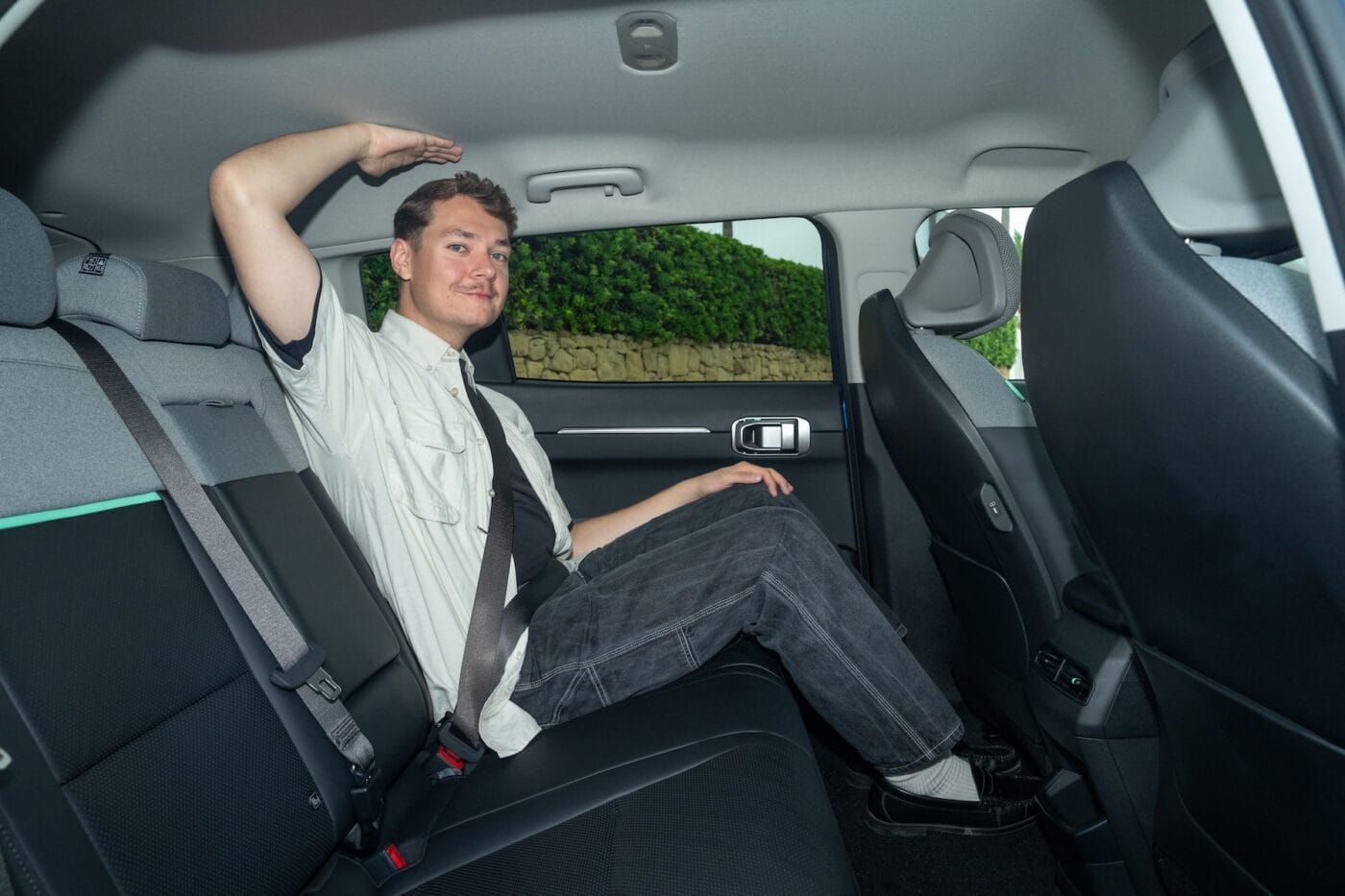
Kia drivers quickly find their way around the cockpit
There is also plenty of space in the front, thanks in part to the width of 1.86 metres. A VW ID.3 is around six centimetres narrower. Overall, the interior of the EV4 feels more like a mid-range car. If you have ever sat in one of Kia’s EV models, you will quickly find your way around the cockpit.
In front of the driver is a screen wall consisting mainly of a 12.3-inch display for driving information and an infotainment touchscreen of the same size. The whole thing is connected by a small 5.3-inch screen for climate control. The EV4 debuts an AI-controlled voice assistant, which was still a little slow on the uptake during our first check. Software updates are delivered ‘over the air’, which means trips to the service partner should be rare.
Although Kia has used harder plastics in a few places, the overall mix of materials in the interior is impressive. It is also quite bright, which is very pleasant given the rather small optional sunroof.
Personally, I much preferred the mid-range ‘Earth’ trim with its light-coloured plastics and green accents to the higher-end but rather grey GT-Line. Overall, it’s pleasing that the differences in the interior are subtle and that the EV4 Earth, despite the almost €2,500 price difference, is anything but stripped down in a direct comparison. The exterior is similar: the EV4’s 17- to 19-inch wheels are real eye-catchers across the board.
The focus is on comfort
Once the EV4 gets going, a harmonious overall picture quickly emerges. Kia has consistently geared its electric compacts towards comfort. This is complemented by the excellent noise insulation and suspension tuning for this segment: the South Korean manufacturer has dispensed with adaptive dampers in this model, opting instead for simpler frequency-selective shock absorbers.
These adjust their hardness mechanically rather than electronically to suit the road conditions. All in all, they do their job really well. With its fairly short spring travel, the suspension makes a rather firm impression. However, this does not make it uncomfortable; instead, it pampers the occupants with a smooth ride.
Longer bumps in particular are reliably ironed out, providing a level of comfort that is normally more familiar in higher segments. Only short jolts, such as speed bumps, are transmitted quite harshly into the cockpit. The exceptionally long wheelbase is also likely to play a role in terms of comfort.
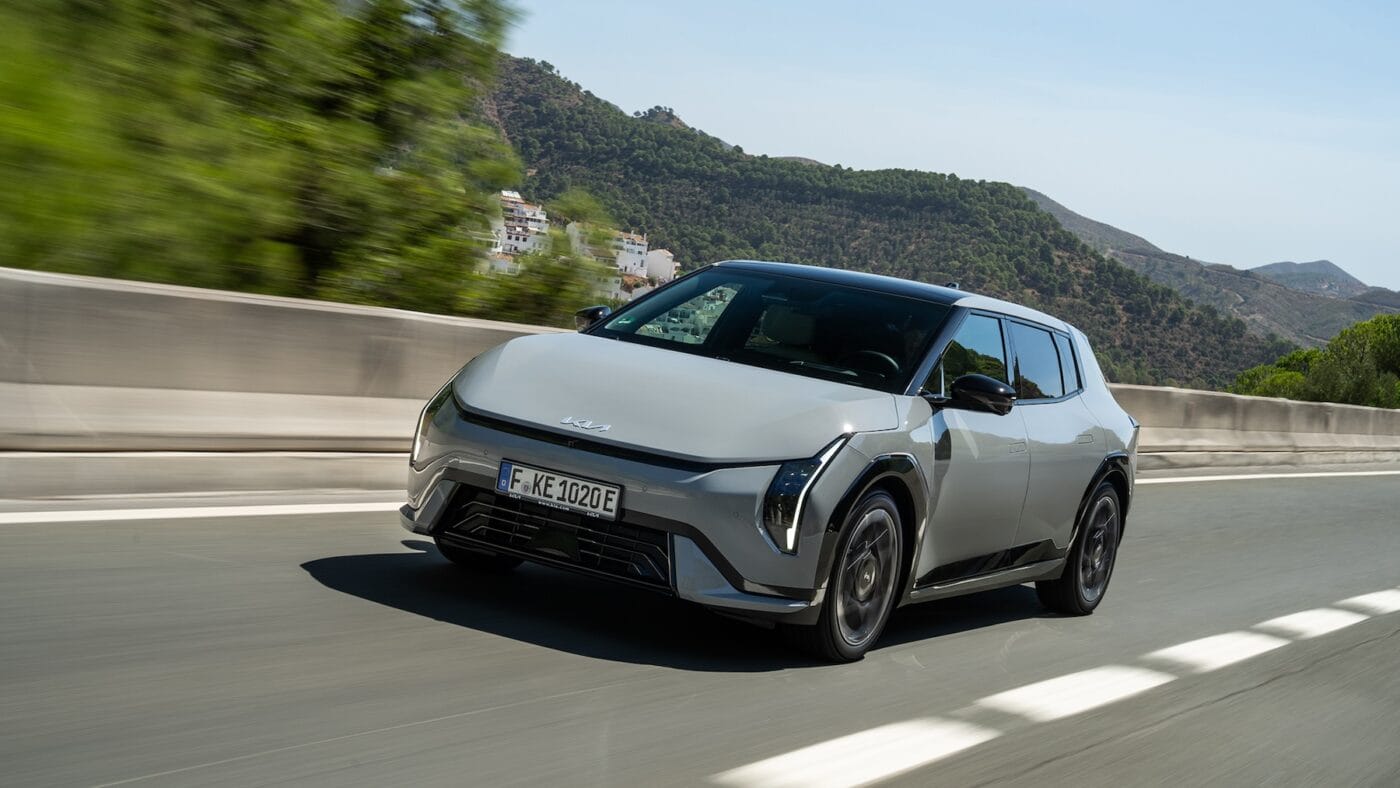
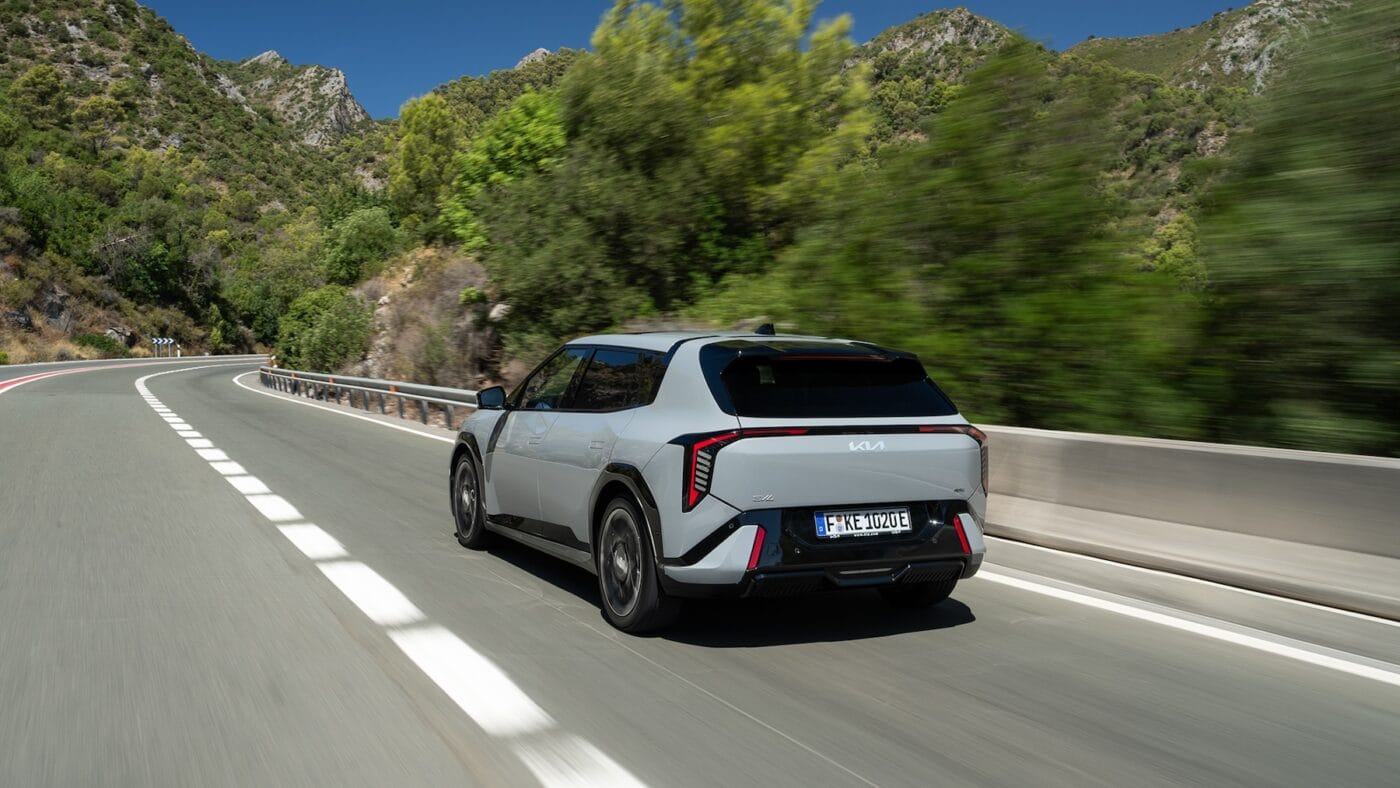
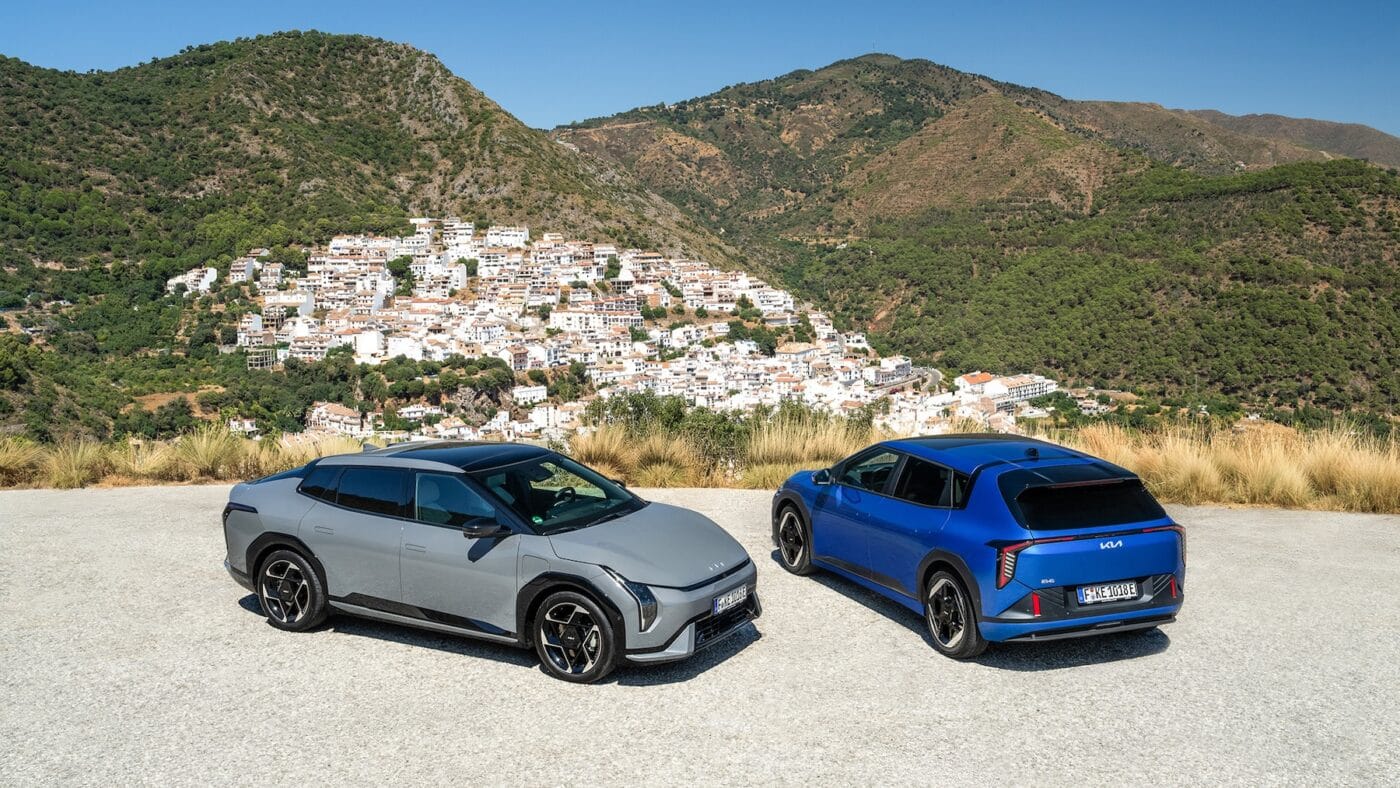
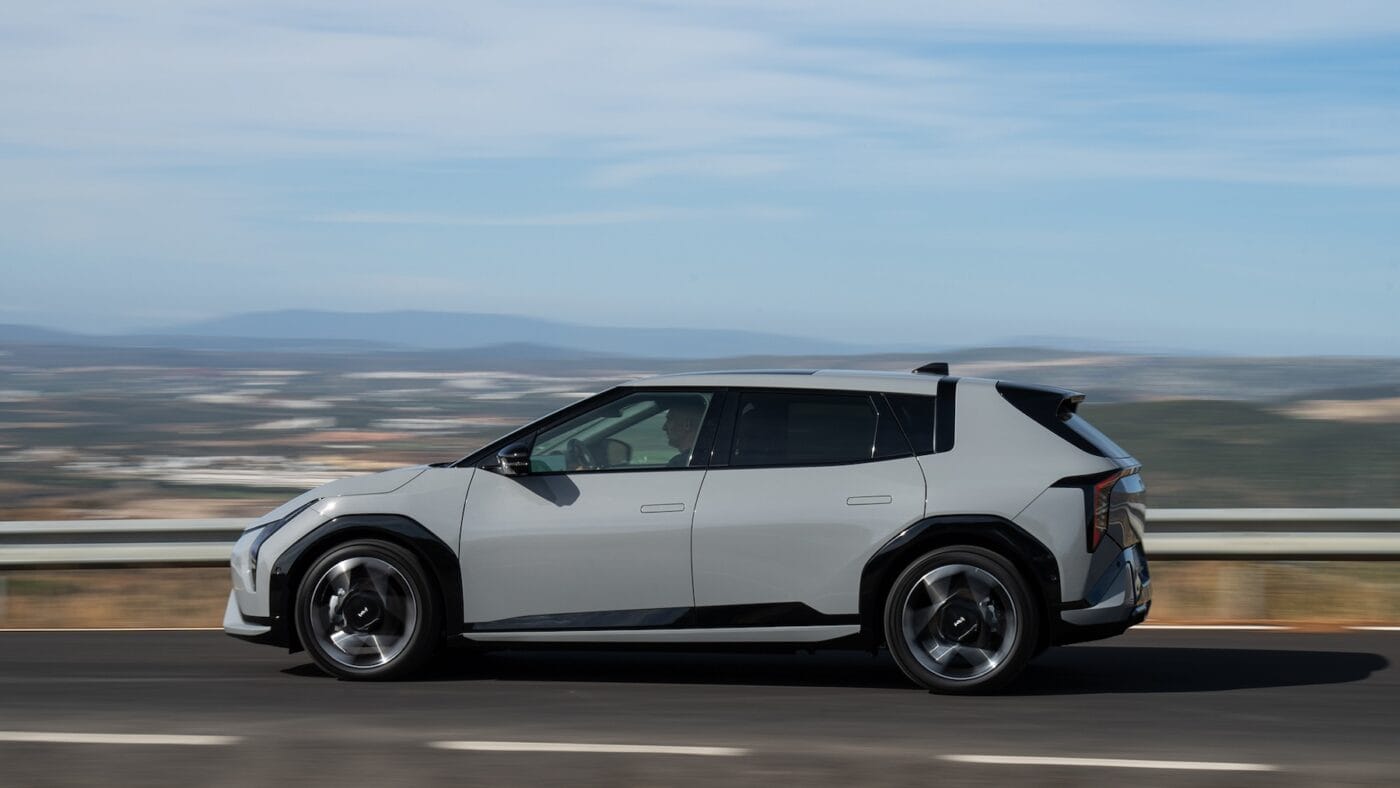
Powerful engine, but no rocket
The steering is well matched to the chassis tuning, as it does not encourage the driver to overdo it. Nevertheless, the compact car gives the driver a feeling of safety and invites them to glide along in a relaxed manner. Even in Normal and Eco modes, it is not too light. When you switch to Sport mode, it becomes noticeably stiffer – but it still doesn’t become particularly communicative or precise. Since Kia has dispensed with adaptive dampers, the different driving modes only affect the steering and the responsiveness of the powertrain; nothing changes in the chassis.
The EV4 is not designed for greater dynamic ambitions in terms of its motor, either. A 150 kW and 283 Newton metre electric motor is always located on the front axle, as in the EV3. This gives the car confident motorisation, but nothing more. The 1.8-tonne basic version with the small battery goes from zero to 100 in 7.4 seconds. The versions with the large battery (81.4 kWh) and more equipment weigh around 150 kilogrammes more and are three-tenths of a second slower. At 170 kph, propulsion is generally limited.
The rather conservative design of the drive system fits in well with the competitive environment. With its newcomer, Kia is primarily targeting established European models. First and foremost among these are the VW ID.3, the Opel Astra Electric and the Peugeot e-308. The two technical siblings from the Stellantis Group even roll along with ‘only’ 115 kW, while Volkswagen’s compact rear-wheel-drive electric car also comes with 150 kW or, in the revised version, 170 kW, depending on the year of manufacture. However, the ID.3 is also available as a GTX with electric all-wheel drive and 240 kW. Kia has already announced that the EV4’s drive range will later be expanded to include an all-wheel drive and a powerful GT version.
The assistance systems performed well during the test drive. Above all, the active lane assist system familiar from Kia’s other EV models worked reliably even on a winding country road. It was even possible to take your hands off the steering wheel for a few seconds without the system issuing a warning. The pedal feel is also impressive and does not seem too artificial. This applies to both the accelerator and brake pedals. The latter is rarely used anyway. Recuperation can be adjusted in three stages using paddle shifters and can be very strong at times. When ‘i-Pedal’ is selected, the compact car also masters one-pedal driving, meaning it comes to a stop solely through recuperation. This is a feature that Kia’s newest family member has over the VW ID.3.
| EV4 Standard Range | EV4 Long Range | |
|---|---|---|
| Drive | FWD | FWD |
| Power | 150 kW | 150 kW |
| Torque | 283 Nm | 283 Nm |
| Acceleration | 7.5 s | 7.8 s |
| Top speed | 170 kph | 170 kph |
| WLTP range | 440 km | 625 km |
| Battery | 58.3 kWh | 81.4 kWh |
| Charge capacity DC | 101 kW | 128 kW |
| Charge time DC 10-80% | 29 min | 31 min |
| Price in Germany | 37,590 Euro | 43,240 Euro |
Real range of just under 500 kilometres
During the test drive around Marbella, which included a lot of motorway driving and outside temperatures of around 25 degrees, the on-board computer showed that one kilowatt hour of electricity was enough for six kilometres. Converted, this means an average consumption of around 17 kWh per hundred kilometres. This put the mid-range Earth model with its large 81.4 kWh battery and 19-inch wheels slightly above the factory specification of 14.4 kWh. With this driving profile and similar weather conditions, the real range is likely to be around 490 kilometres.
Kia specifies the WLTP range for the more aerodynamic fastback at up to 633 kilometres. The five-door hatchback intended for Europe has a range of 625 kilometres. This makes the EV4 not only the Kia electric car with the longest range, but also the leader in this discipline among all EV rivals in the C segment. The ID.3, for example, has a maximum range of 604 kilometres. According to Kia, the smaller 58.3 kWh battery should still enable a WLTP range of 440 kilometres.
No turbo at the charging station
However, the EV4 does not exactly shine when it comes to maximum charging power: with the small battery, it is only 101 kW, and with the larger battery, it is 128 kW. But even that is not earth-shattering. It may outperform its competitors from Stellantis, which draw a maximum of 100 kW. The Renault Mégane E-Tech is at a similar level, but there are competitors that offer significantly more.
VW, for example, has significantly increased the charging power of the ID.3 as part of its facelift. The electric compact car from Zwickau now charges at 145 kW in the basic version, while the charging curve of the top-of-the-range ID.3 GTX reaches its peak at 185 kW, at least in theory.
Kia never tires of emphasising that it is not only the peak charging power that matters, but also the charging curve. And this should be particularly smooth. That’s true, but we weren’t able to verify this during the test drive. The EV4 still has to prove itself in a detailed test, including a charging curve check. The EV3, which has the same battery, has already passed this test. And indeed, the charging power remained high throughout almost the entire process.
According to the manufacturer, charging from 10 to 80 per cent takes 29 minutes for the small battery, while the long-range version takes two minutes longer. Half an hour of waiting time is acceptable for occasional long journeys, but this compact car is not the dream car of every sales representative. One would expect a little more from Kia in particular. After all, Kia was among the 800-volt pioneers who have set themselves apart from the competition with models such as the EV6, which has comparatively short charging stops.
Given the pricing policy, a certain technical advantage would also have been possible. Admittedly, the EV4 is well equipped across the board. However, the base model costs €37,590, making it more expensive than its competitors from Stellantis, Renault and VW. Only the list price of the Cupra Born is higher. In addition, there is a lot of room for improvement in terms of the EV4’s price. The EV4 GT-Line Long Range is close to the €50,000 mark. However, to Kia’s credit, the company offers a seven-year warranty on the vehicle, while the Wolfsburg-based company only offers a two-year warranty on the ID.3 as standard.
Conclusion
With the EV4, Kia has put a successful compact car with a striking design on the road, which impresses above all with its generous space, long range and clear focus on comfort. In times when even the most sedate models are trying to be sports cars, its plush suspension tuning is a real blessing.
What is incomprehensible, however, is why Kia has not upped the ante in terms of charging performance, especially given the current arms race in this discipline. The EV4 still has its entire career ahead of it, but there are already competitors that outshine it in terms of peak charging power. The electric car is also not a bargain in terms of price. It therefore remains to be seen whether it can repeat the success of its technological sibling, the EV3.

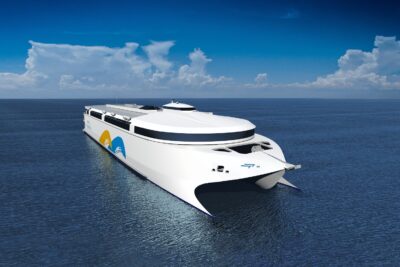
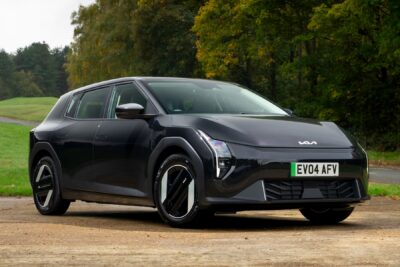

0 Comments